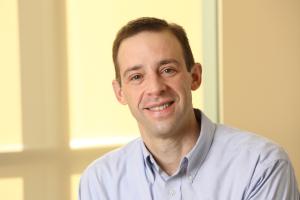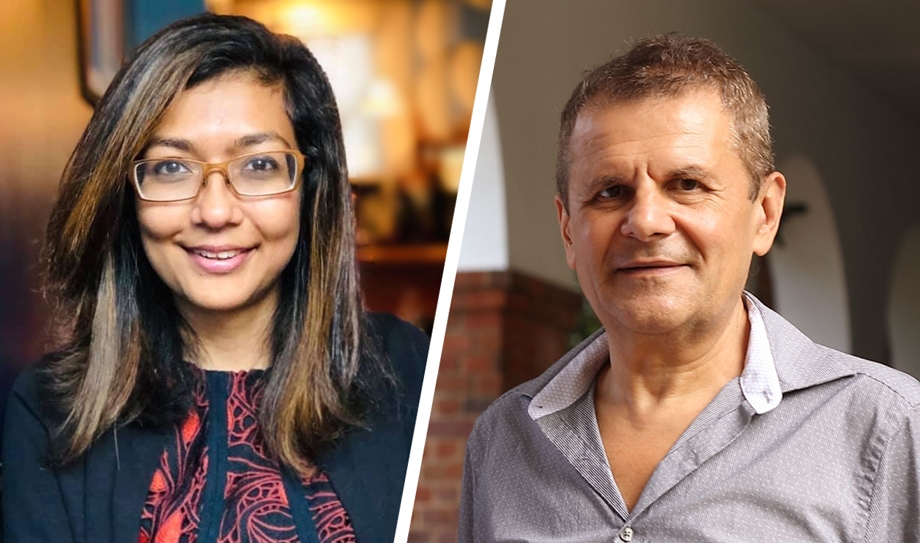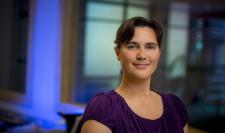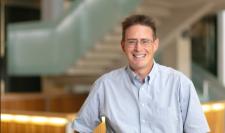
In 1994, UVA computer science professor emeritus William Wulf and his then-graduate student, Sally McKee, identified what would become a defining challenge in the field of computer science for decades to come. They called it the “memory wall.”
The memory wall results from two issues: outdated computing architecture, with a physical separation between computer processors and memory; and the fact that a processor can run much faster than the speed at which memory chips can provide data.
As early as the 1980s, researchers were predicting that computer systems could not keep up with the future trajectory of data. Then came the internet of things – devices connected through the cloud collecting vast amounts of data. The rapid growth of bioinformatics has been another source of the data explosion.
By 2018, Forbes reported that 90% of the world’s data had been generated in just the previous two years. The servers processing these data have not been able to keep up and provide timely results, such as identifying new COVID variants or responding quickly when a patient falls ill.
That was the year when researchers in the University of Virginia’s Department of Computer Science and Charles L. Brown Department of Electrical and Computer Engineering were tapped to lead a $29.7 million research effort to remove the memory wall.
Four years into the five-year grant, the UVA-led, nine-university Center for Research in Intelligent Storage and Processing in Memory, or CRISP, has made strides that match the gargantuan problem the center is trying to solve.
The center’s investigators and graduate students have published 378 papers, released 26 new software tools, and submitted 18 patent applications of which two have already been granted by the U.S. Patent and Trademark Office.
“We are four years into developing novel architectures that will benefit society in ways not even imaginable a few years ago,” said Kevin Skadron, Harry Douglas Forsyth Professor of Computer Science at the UVA School of Engineering and Applied Science and center leader.
The center also has funded 185 graduate students across the participating universities, 59 of whom have graduated and gone on to jobs in important sectors such as the U.S. semiconductor industry and as faculty in U.S. universities. Skadron said the center’s work has also provided opportunities for undergraduate researchers at UVA and supported innovations in curriculum for computer systems design.
The new architectures the CRISP collaborators are developing integrate processing and memory into a single unit. By tightly coupling the processing into the data storage, the processing rate can be dramatically increased.
The fundamental redesign is overdue and equates to past evolutions in computing, like the introduction of integrated circuits and the paradigm shift from mainframes to personal computers and workstations.
The UVA-led center is part of the Joint University Microelectronics Program funded and managed by North Carolina-based Semiconductor Research Corporation, a consortium that includes engineers and scientists from technology companies, universities and government agencies.

UVA’s team includes Skadron; Samira Khan, assistant professor of computer science and an expert in computer architecture and its implications for software systems; and Mircea Stan, Virginia Microelectronics Consortium Professor in electrical and computer engineering and an expert in the design of high-performance, low-power chips and circuits.
Center collaborators are Cornell University; Georgia Tech; Pennsylvania State University; the University of California, Los Angeles; the University of California, San Diego; the University of Washington; the University of Wisconsin; and the University of Pennsylvania.
One of the Center's early wins came in the fight against cancer.
The key to targeted cancer treatments is analyzing DNA samples to find patterns in genetic data, which then pinpoint specific treatments based on epidemiology. Center researchers set out to see just how much they could speed up that process, which scientists call “sequence alignment.”
The results were stunning. Their new architectures could shorten sequence alignment time from 20 hours to less than a second. Center researchers also projected they could speed this up 100 times further in future evolutions of their processing redesigns.
“This one example highlights the importance of our collaboration with other universities, across multiple disciplines, to remove the memory wall,” Skadron said following the center’s second-annual review in Nov. 2019. “Industry and government are working with us to realize the incredible breakthroughs that can occur with large data sets. All sectors of our economy and society will benefit.”
As center researchers headed back to their labs to build on these exciting results, the first cases of a novel virus were appearing in Wuhan, China.

